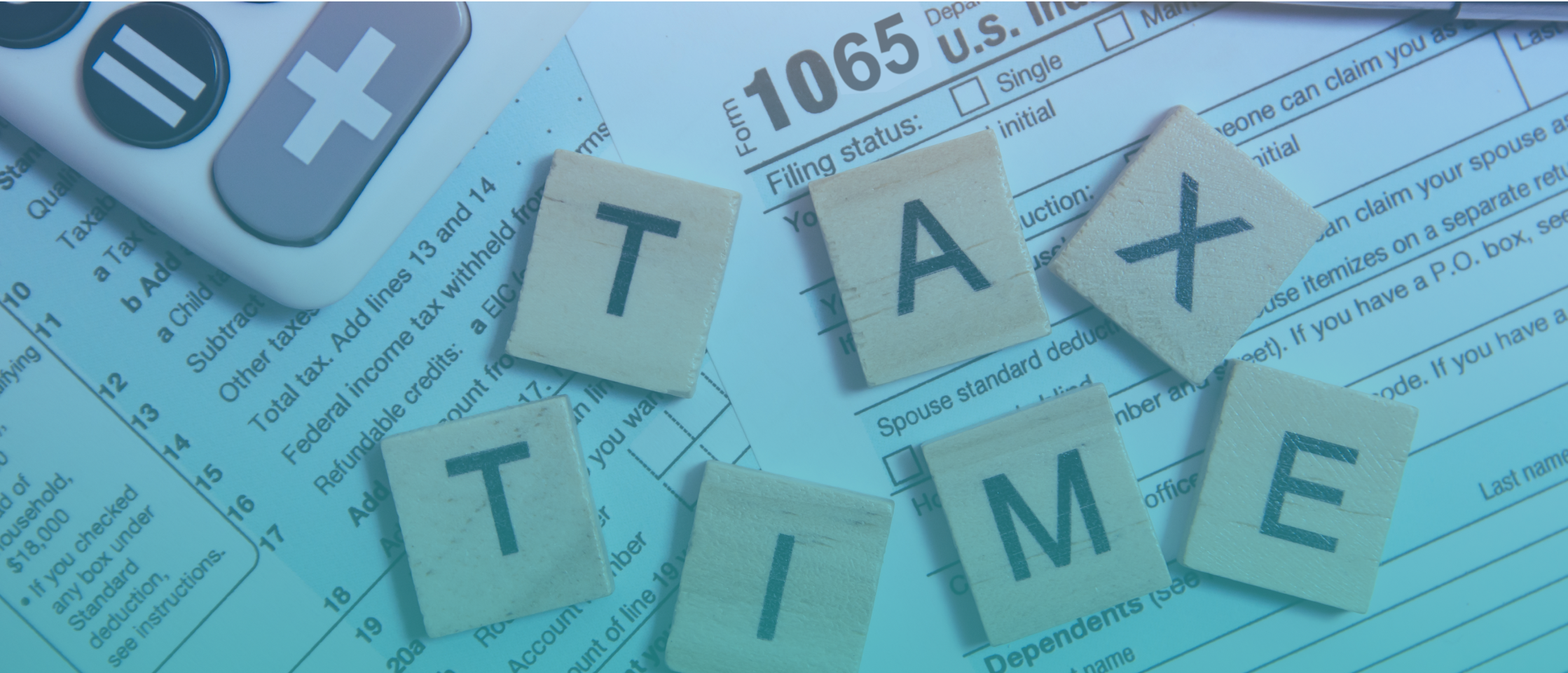Table of content
If you invest in partnerships or S corporations, you've likely come across a Schedule K-1. This tax form is a crucial part of your investment journey, detailing your share of the entity's income, deductions, and credits.
Understanding your Schedule K-1 is essential for accurate tax reporting and effective financial planning. In this blog, we’ll break down the Schedule K-1, explaining each section in clear terms and highlighting its importance for your real estate investments. Let's break down the complexities of the Schedule K-1.
K-1 Form
To set the context, a Schedule K-1 is a U.S. tax form used to report income, deductions, and credits for individuals involved in partnerships, S corporations, and certain trusts. It outlines an individual’s share of the entity's income, losses, and other tax attributes, which must be reported on their personal tax return. Understanding how to interpret this form is crucial for accurate tax compliance and effective financial planning in private markets.
When are K-1s Due?
For businesses operating on a calendar year, Form 1065 must be filed by March 15, unless a six-month extension is requested using Form 7004. March 15 is also the deadline for partnerships to distribute individual Schedule K-1s, giving partners approximately one month to file their personal tax returns by April 15. If the deadline falls on a weekend or holiday, it moves to the next business day.
Businesses with a fiscal year must file tax returns and distribute Schedule K-1 forms to partners by the fifteenth day of the third month following the end of the fiscal year. For example, if a partnership's fiscal year ends on April 30, 2024, Schedule K-1s must be issued by July 15, 2024, and partners will use this information for their 2024 tax returns filed in 2025. Not complicated, right :)
How to Read a K-1, Form 1065
All necessary information to complete a Schedule K-1 is derived from the Income and Expenses section of Form 1065. Schedule K-1 records various income types, such as real estate income, bond interest, royalties, dividends, capital gains, and foreign transactions. Having this data handy is essential for correctly filling out the form.
Part 1: Information About the Partnership
This section provides essential details about the partnership or fund you’ve invested in. It includes your share of profits, losses, interest income, dividend income, and other income items. Accurate information here is crucial for your tax reporting.
Item A: Employer Identification Number (EIN)
Fill your partnership’s Employer Identification Number (EIN). This unique number is used by the IRS to identify your partnership for tax purposes.
Item B: Partnership Contact Information
Enter the contact information for your partnership. This should include the address, phone number, and any other relevant contact details.
Item C: IRS Filing Center
Specify the IRS filing center where Form 1065 will be sent. If you're unsure of the correct center, you can find the information on the IRS website here.
Item D: Publicly Traded Partnership (PTP)
Check this box if your partnership is a publicly traded partnership, meaning its shares are traded on an established securities market. For more details on PTPs, visit the IRS guide here.
Part 2: Information About the Partner
Part 2 of a Schedule K-1 document outlines your share of the partnership's or fund's income, losses, and deductions from specific activities or transactions. It breaks down the fund's investment activities for the tax year.
Since this section can vary based on the fund's portfolio and activities, it's important to review it carefully to understand how your investment impacts your tax obligations and financial position.
Item E: Taxpayer Identification Number (TIN)
Enter your Taxpayer Identification Number (TIN) here. This can be your social security number (SSN), individual taxpayer identification number (ITIN), or employer identification number (EIN). For more details, visit the IRS website here.
Items F-I: Partner Contact Information and Status
Enter your contact information, indicate whether you’re a general or limited partner, and specify if you’re a foreign or domestic partner.
Item J: Share of Profits, Loss, and Capital
Report your share of the partnership’s profits, losses, and capital here. These amounts are usually based on the business partnership agreement. If you joined the partnership after the beginning of the reporting period, enter the percentages that applied when you joined in the ‘Beginning’ column. If you left the partnership before the end of the period, enter the percentages that applied when you left in the ‘Ending’ column.
Item K: Share of Partnership Liabilities
Enter your share of the partnership’s liabilities, categorized by type: recourse, qualified nonrecourse, and nonrecourse. Recourse debt makes you personally liable (meaning lenders can pursue your personal assets), while nonrecourse debt does not. For more information, see the IRS’s guide to recourse debt here and the Schedule K-1 instructions here.
Item L: Capital Account
Detail your capital in the business at the beginning of the tax year, any contributions made during the year, increases or decreases in your share, withdrawals or distributions made, and the ending capital amount for the year.
Item M: Property Contributions with Built-in Gain or Loss
Check “yes” if you contributed property with a built-in gain or loss to the partnership this year. The IRS defines a built-in gain or loss as the difference between the fair market value of the property and your adjusted basis at the time of contribution.
Part 3: Partner’s Share of Current Year Income, Deductions, Credits, and Other Items
This section details your share of the partnership's income, losses, deductions, credits, and other items for the tax year. It represents your portion of the realized activities and transactions within the partnership.
Box 1: Ordinary Business Income (Loss)
Enter your share of the partnership’s ordinary income or loss from its trade or business activities for this year. This encompasses the regular earnings or losses from the partnership’s core operations. For more details, refer to the IRS guide on ordinary income.
Box 2: Net Rental Real Estate Income (Loss)
Record your share of net rental income or loss from real estate activities, such as renting residential, commercial, or retail properties.
Box 3: Other Net Rental Income (Loss)
Report your share of other rental income or loss not covered under net rental real estate income.
Box 4: Guaranteed Payments
Enter any guaranteed payments you received from the partnership. These are payments made to partners regardless of the partnership’s income, often in exchange for services or capital use. Learn more about guaranteed payments here.
Box 5: Interest Income
Report any interest income earned during the year, such as from bonds, certificates of deposit, or savings accounts. For more information, visit the IRS page on interest income.
Box 6: Dividends
Include any dividends received from the partnership, whether ordinary, qualified, or dividend-equivalent payments. Dividends are typically distributions of a company’s earnings to its shareholders.
Box 7: Royalties
Record any royalty income received during your dealings with the partnership, such as payments for the use of intellectual property or natural resources.
Box 8: Net Short-Term Capital Gain (Loss)
Report any short-term capital gains or losses from the partnership. These are gains or losses from the sale of assets held for one year or less.
Box 9a-c: Other Capital Gains (Losses)
Detail any long-term capital gains or losses, which are gains or losses from assets held for more than one year. For a detailed explanation, refer to the IRS guide on capital gains.
Box 10: Net Section 1231 Gain (Loss)
Report gains or losses from Section 1231 transactions, which involve the sale or exchange of business property. More details can be found in the IRS Schedule K-1 guide.
Box 11: Other Income (Loss)
Enter any other income or losses not covered in the previous categories. Attach a statement explaining the type of income or loss. Refer to the IRS Schedule K-1 instructions for more details.
Box 12: Section 179 Deduction
If claiming a Section 179 deduction, report your share here. This deduction allows businesses to deduct the cost of certain types of property as an expense.
Box 13: Other Deductions
Use this box to report any additional deductions, such as charitable contributions or pension contributions. Codes for these deductions can be found in the IRS Schedule K-1 instructions.
Box 14: Self-Employment Earnings (Loss)
Report any self-employment earnings or losses from the partnership.
Box 15: Credits
Use the codes in the Schedule K-1 instructions to report any credits you’re claiming, including the low-income housing credit, research activities credit, and others.
Box 16: Schedule K-3
If applicable, check this box to attach a Schedule K-3 for reporting international activities.
Box 17: Alternative Minimum Tax (AMT) Items
Enter any information related to the Alternative Minimum Tax (AMT) that applies to you. More information can be found in the IRS Form 1040 instructions.
Box 18: Tax-Exempt Income and Nondeductible Expenses
Report any tax-exempt income or nondeductible expenses.
Box 19: Distributions
Include any distributions received from the partnership, whether in cash, marketable securities, or property. For more information, see the IRS guide on distributions subject to section 737.
Box 20: Other Information
Use the codes in the Schedule K-1 and its instructions to report any other relevant information.
Box 21: Foreign Taxes Paid or Accrued
Report any foreign taxes paid or accrued during the reporting period.
Understanding your Schedule K-1 is essential for accurate tax reporting and effective financial planning. By breaking down each part of this form, you can ensure compliance and make informed investment decisions.
If you need a more detailed explanation or personalized assistance, connect with a Waahe Expert to help you navigate your Schedule K-1. Let’s talk!








